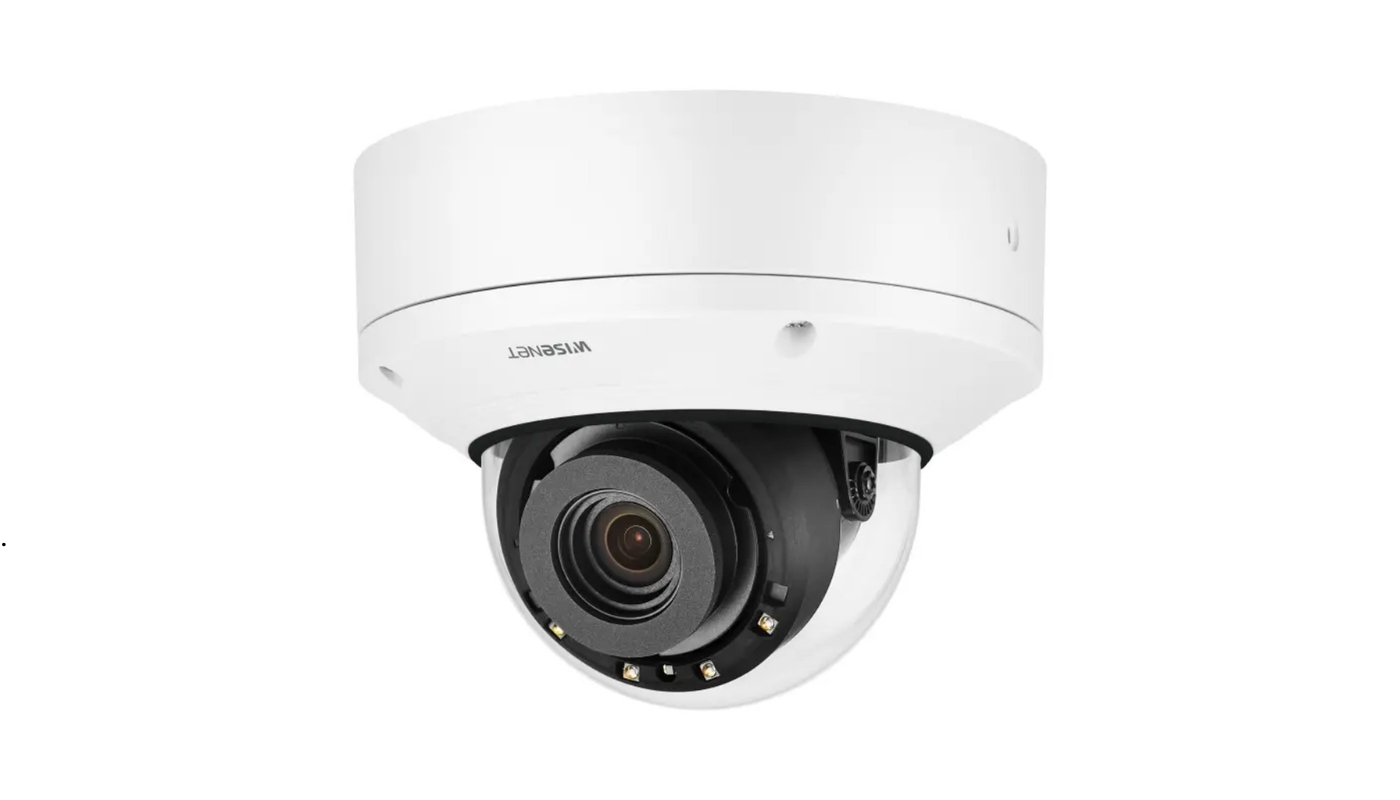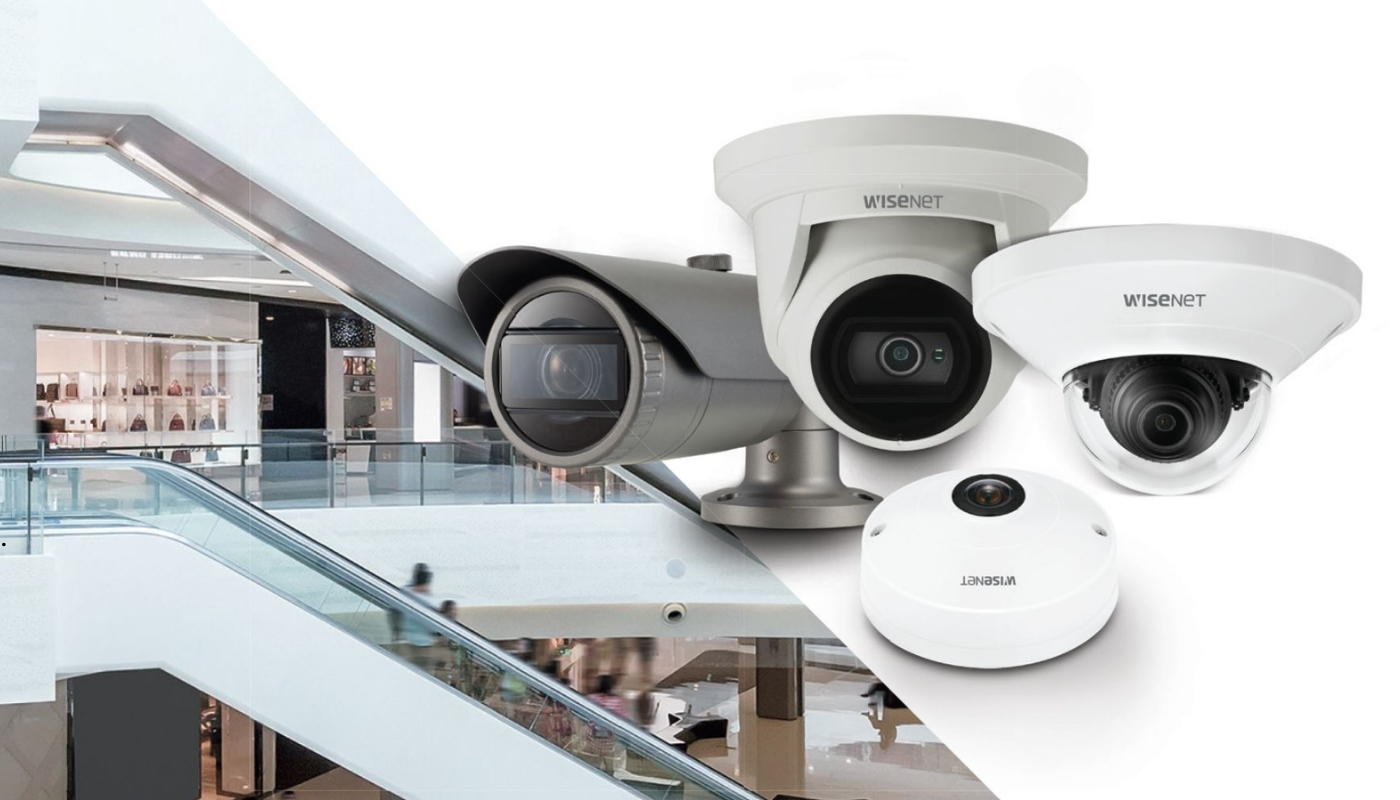
Table of Content
-
Introduction: The Evolution of Smart Surveillance
-
Why Hanwha Vision? A brief company overview
-
What are network cameras and why they matter today
-
Hanwha Vision’s camera families — who fits which project
-
Key Hanwha technologies that make a difference
-
Common real-world applications and verticals
-
How to choose the right Hanwha network camera for your project
-
Typical implementation challenges and how SAC helps
-
SAC value proposition as Hanwha Vision distributor in Egypt & the region
-
Future trends — what to expect in network video surveillance
-
Resources & links
Introduction: The Evolution of Smart Surveillance

In a world where security has become a top priority for businesses, governments, and individuals alike, network cameras have revolutionized the way we monitor, protect, and manage environments. Among the global leaders driving this transformation is Hanwha Vision, a brand renowned for combining innovation, reliability, and advanced artificial intelligence to deliver world-class video surveillance solutions.
As an official distributor and trusted partner of Hanwha Vision in Egypt, SAC Distribution stands at the forefront of bringing these cutting-edge technologies to local markets, empowering organizations with high-performance, scalable, and intelligent security systems. From city surveillance and retail safety to industrial protection and transportation monitoring, Hanwha Vision’s network cameras redefine what’s possible in modern surveillance.
Why Hanwha Vision? A brief company overview
Hanwha Vision (previously part of Hanwha Techwin branding) has decades of experience in optics, image processing, and video systems. The company invests heavily in SoC design (system-on-chip), AI models tuned for surveillance, and integration with leading VMS platforms. That combination enables cameras that do more on the edge — lowering bandwidth/storage demands while increasing detection accuracy and reducing false alarms.
What are network cameras and why they matter today
Network cameras (IP cameras) transmit video over an IP network instead of analog coaxial cable. Advantages include:
-
Higher resolution and image quality (2MP, 4MP, 8MP/4K and above) for identification and forensic needs.
-
Edge computing — modern cameras run analytics onboard (person/vehicle detection, attributes, license-plate assists), reducing the need for expensive central servers.
-
Flexible storage options (local SD, NVRs, hybrid, cloud), enabling designs matching risk and budget.
-
Easier integrations via standards like ONVIF and platform plugins (WAVE, Genetec, Milestone), enabling customers to choose the VMS that suits their operations.
These features make network cameras the right foundation for retail analytics, critical infrastructure protection, smart cities, transportation, banking, and more.
Hanwha Vision’s camera families — who fits which project
Hanwha organizes cameras into product families so integrators and end-users can match capability to use case. Below is a practical breakdown.
X Series — Flagship: AI-native, modular, highest image quality
X Series (including the newer Wisenet X generation) targets projects that require the best image fidelity, multi-NPUs, advanced on-edge AI, and often modular hardware (swappable sensors / modules). These are ideal for stadiums, airports, critical infrastructure, and forensic-heavy deployments. The newest X platforms include Wisenet 9 SoC and advanced privacy / cybersecurity features.
P Series — Advanced analytics & AI focus
P Series balances advanced analytics with cost-efficiency. It includes strong AI detection/classification and is a great option when you need robust person/vehicle detection and attributes without the premium price of X Series.
Q Series — Midrange: solid image + essential analytics
Q Series delivers excellent image quality, H.265 support, WDR and built-in analytics suitable for retail, offices, banks, and corporate campuses. It’s a go-to for projects that require consistent quality with controlled budgets.
A Series — Value series (Wisenet A)
A Series focuses on delivering the essential feature set: reliable imaging, WiseStream II + H.265 compression for bandwidth savings, and basic analytics at a competitive price — well-suited for small-to-medium deployments and projects with tighter budgets.
T / Special-purpose series — Thermal, explosion-proof, extreme environments
For industrial, marine, or hazardous environments, Hanwha offers specialized cameras (thermal modules, explosion-proof housings, long-range PTZs). Use these where environmental resilience or thermal imaging is required.
Multi-sensor & panoramic cameras
Multi-sensor cameras combine multiple imagers to cover wide areas with fewer physical devices, reducing cabling and simplifying analytics over large open areas (parking lots, plazas, building perimeters).
Key Hanwha technologies that make a difference
Understanding the technologies under the hood explains why Hanwha cameras are chosen for professional projects.
Edge AI & Wisenet AI features
Hanwha’s Wisenet AI runs on the camera SoC to classify people, vehicles, faces, license plates and extract object attributes (color, direction, carrying status, etc.). Edge processing increases detection speed and lowers false alarms from non-relevant motion (e.g., trees, shadows). Hanwha also offers features like BestShot (capture of the best frame for an event) and AI search to speed up forensic investigations.
WiseStream II and video compression strategy
WiseStream II complements H.265 compression by dynamically adjusting the encoder based on scene complexity. The result is significantly lower bandwidth and storage use while retaining useful image quality—critical for large multi-camera systems and cloud/hybrid storage models. Whitepapers and tests show substantial bitrate reductions when WiseStream II is used properly.
Low-light performance & Wide Dynamic Range (WDR)
Hanwha designs optics and sensors to maximize low-light performance. Many cameras include enhanced WDR (even “eXtreme WDR”) and noise reduction to preserve usable detail across challenging lighting (backlit doors, mixed indoor/outdoor scenes).
Cybersecurity & firmware practices
Enterprise deployments demand secure devices. Newer Hanwha platforms incorporate hardened firmware, secure boot, hardware tamper detection, and actively maintain firmware updates. For highest-security use cases the company cites certifications and added protections on recent SoCs. Integrators should run device inventory, keep firmware up to date, and follow secure configuration best practices.
Open standards & VMS interoperability
Hanwha supports standards such as ONVIF and provides tight integrations via official plugins (e.g., Genetec plugin) and first-party VMS (Wisenet WAVE). That makes it easy to add Hanwha cameras into mixed-vendor environments or scale with a chosen VMS. WAVE supports ONVIF devices and can manage thousands of streams.
Common real-world applications and verticals
Hanwha network cameras can be deployed across almost any vertical; below are typical examples.
Retail & Shopping Centers
Use cases include loss prevention, queue management, people counting, heat-mapping, and targeted alerts for suspicious behavior. Edge AI reduces false alarms and enables analytics for shopper flow and conversion optimization.
High-security needs (encryption, high resolution for teller stations, strong chain of custody) mean banks often select cameras with strict secure configuration and forensic-grade imaging. Hanwha’s cameras and SAC’s integration services support these requirements.
Transportation & Critical Infrastructure
Airports, train stations and highways benefit from PTZs, multi-sensor arrays, and thermal imaging for safety monitoring, incident detection and automated alerts. Hanwha’s specialty models fit these scenarios.
Industrial & Manufacturing
Environments with dust, vibration, or extreme temperatures require industrial enclosures and explosion-proof models; thermal and AI-enabled analytics help with safety detection and process monitoring.
Smart Cities & Public Safety
Multi-sensor cameras and edge analytics are used for city-scale monitoring (traffic management, crowd safety, perimeter security) where bandwidth optimization and local analytics reduce central processing loads.
How to choose the right Hanwha network camera for your project
Selecting the correct camera is a balance of technical need, budget, and operational constraints. Use this checklist during design:
-
Define the mission — identification (face/plate), deterrence, detection, or analytics? High-risk identification needs higher resolution and quality optics.
-
Resolution & frame rate — higher MP yields more detail but increases bandwidth/storage. Choose what the forensic requirement really demands.
-
AI requirements — if you need person/vehicle attribute extraction or LPR support, choose AI-enabled models (P or X series).
-
Environmental rating — exterior cameras should meet IP66/IP67 and wide temperature specifications. For hazardous areas choose explosion-proof models.
-
Integration & VMS — ensure the camera firmware version is compatible with your chosen VMS (WAVE, Genetec, Milestone) and use Hanwha plugins for deeper functionality if available.
-
Bandwidth strategy — plan cabling, PoE switches, and use WiseStream + H.265 to reduce operating costs.
-
Lifecycle & support — check warranty, local availability of spare parts, and whether the distributor (SAC) provides training and local maintenance.
Typical implementation challenges and how SAC helps
Challenge: Network & Bandwidth constraints
Solution: SAC engineers design a network architecture (PoE switches, VLANs, QoS, edge recording policies) and recommend WiseStream-enabled cameras to minimize bandwidth. Use of local NVRs with periodic offload to central storage is common.
Challenge: Cybersecurity & firmware management
Solution: SAC provides secure device provisioning, firmware management plans, and configuration hardening workflows ensuring devices are not left vulnerable. Newer Wisenet platforms include enhanced security features which SAC leverages for sensitive installations.
Challenge: Complex analytics & false positives
Solution: By selecting appropriate AI-capable camera series and tuning detection rules (regions of interest, sensitivity, object size/attributes), SAC reduces false positives and focuses alerts on meaningful events.
Challenge: Local support & spare parts
Solution: SAC stocks core product lines, maintains spare part inventories, and delivers local technical support and training — shortening mean time to repair (MTTR) for customers.
SAC value proposition as Hanwha Vision distributor in Egypt & the region
SAC (SAC Distribution Center) acts as a recognized Hanwha Vision distributor in Egypt. SAC’s strengths for customers include:
-
Authorized distribution & product authenticity — ensuring original Hanwha Wisenet cameras and valid warranties.
-
Local stock & logistics — faster delivery and better price predictability for Egyptian projects.
-
Project engineering & turnkey services — from site surveys and system design to installation, commissioning and training.
-
After-sales support — maintenance contracts, spare-part provisioning and firmware management.
Future trends — what to expect in network video surveillance
-
AI-native SoCs with multiple NPUs will enable more sophisticated on-edge analytics (behavioral analysis, re-ID, dynamic privacy masking). New Wisenet 9-based devices point this way.
-
Cloud-hybrid architectures — local edge analytics plus cloud orchestration and long-term archival to scale investigations.
-
Improved compression techniques beyond H.265 and smarter predictive bitrate control will continue to cut storage costs (WiseStream-type evolution).
-
Higher cybersecurity standards — FIPS-level certifications and hardware attestation are becoming more relevant for critical infrastructure.
-
Integration with city-scale IoT — video becomes one of many sensor feeds feeding unified command centers for smarter, safer urban operations.
Hanwha Vision network cameras span from value-oriented models to flagship AI-first devices suitable for the most demanding deployments. When paired with a capable local partner like SAC, customers get full lifecycle support — from design and supply to commissioning and maintenance. If you’re planning a new surveillance deployment or upgrading an existing system, start with a clear mission definition (identify vs detect vs analyze), then choose the camera family and integration approach that fits that mission.
Resources & links
-
Hanwha Vision — Network Cameras overview. hanwhavision.com
